Roasted Butternut Squash Pasta
It’s an autumn favorite! This cozy Roasted Butternut Squash Pasta recipe with bacon, rosemary, toasted walnuts, and Parmesan hits all the most delicious fall notes. We love that it feels fancy and tastes amazing but is really pretty simple to get on the table.
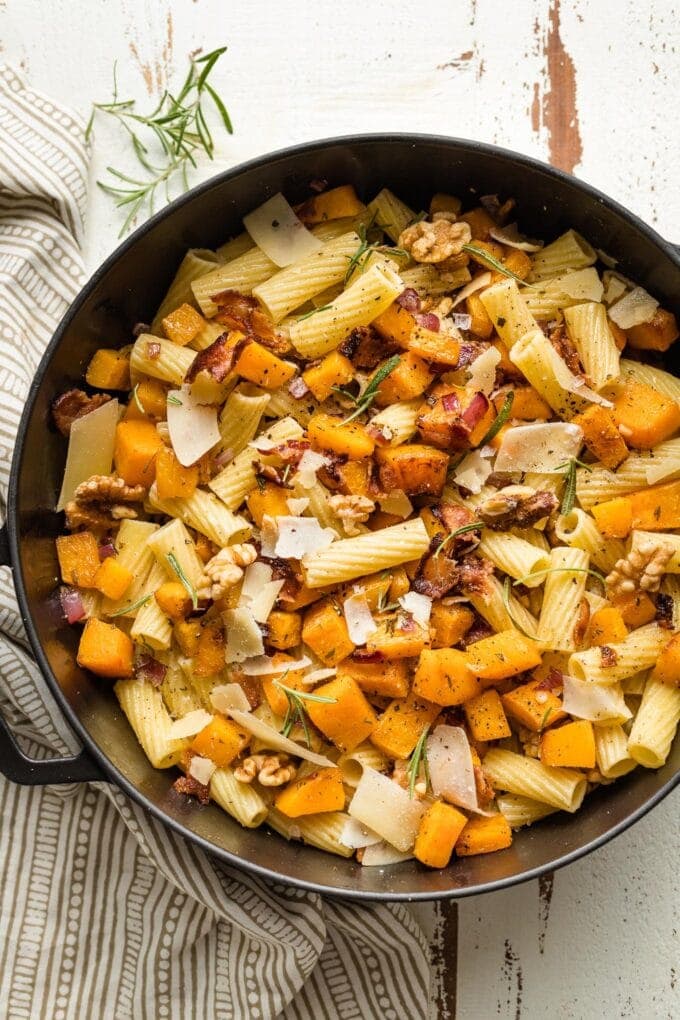
Few ingredients are so closely linked to a season as butternut squash is to the fall. Cozy, hearty, and versatile, this widely-available winter squash is the culinary equivalent of sweaters and boots.
You can use butternut squash in countless ways, but this pasta recipe is especially easy to love. The high heat of roasting brings out the butternut’s natural sweetness, which then pairs perfectly with generous sprinkles of salty bacon, woodsy rosemary, crunchy walnuts, and tangy Parmesan.
Best of all, this feels fancy yet is easy to make. It will take just over 30 minutes, but this is only because the squash needs time to roast, which fortunately is a completely hands-off process. Everything else comes together quite quickly.
Ingredients & Substitutions
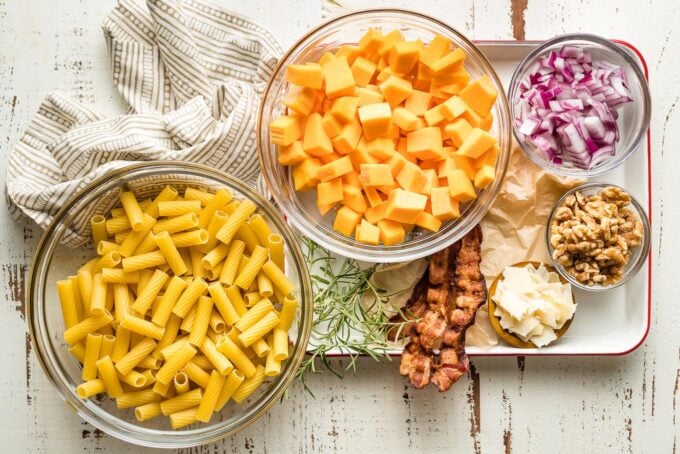
Here are a few notes and shopping tips about what you’ll need, as well as possible substitutions. Full amounts are noted in the print-friendly recipe card below.
- Cubed butternut squash. You should have plenty from one large or medium squash, or buy it pre-peeled and cubed to save time. If purchasing pre-peeled squash aim to have at least 3 cups, perhaps a bit more.
- Red onion. My first favorite substitute would be shallot, followed by a sweet onion, then yellow onion. But all are good!
- Pasta. Anything substantial. Rigatoni is my favorite and what’s pictured here. Penne, fusilli, ziti, or farfalle would all work well, too. This recipe also works very well with whole wheat pasta, chickpea pasta, or any other specialty variety.
- Rosemary. Fresh is truly heavenly for this recipe, but I would not hesitate to use dried in a pinch. If I had only a few sprigs of fresh, I would put dried rosemary in with the squash to roast and save the fresh for a sprinkle on top at the end.
- Walnuts. Add such a satisfying crunch!
- Bacon. This adds terrific salty flair, but I know two vegetarians who still love this recipe bacon-free. They just add extra walnuts! If you do eat meat but want to experiment, crisped prosciutto is also a great add here.
- Parmesan cheese.
- Butter.
- Olive oil.
- Kosher salt and black pepper.
Related: Instant Pot Butternut Squash Risotto with Crisped Prosciutto
How to peel butternut squash?
Although butternut squash skin is technically edible, we only want the tender, creamy interior for this recipe. Here’s what to do:
- Remove both short ends of the butternut with a sharp knife so you have two flat surfaces on either end. This makes the next steps more safe.
- Stand the squash upright on a cutting board with the larger cut side facing down.
- Steady the squash in your non-dominant hand, while using your dominant hand to run a vegetable peeler downward in sections until all of the skin is removed.
- Your squash is now ready to seed and chop!
How to seed and cut butternut squash?
- Keep the peeled squash standing upright on the cutting board.
- Use your sharp knife again to carefully cut the squash down the middle, length-wise.
- Use a large spoon to scoop out the seeds and a tiny bit of the fleshy interior that surrounds them. (Butternut squash seeds are edible, so if you like you can clean and toast them separately for a snack or a salad topping.)
- Turn the halves cut side down and chop the squash into short rectangles, then into 1-inch cubes.
Watch this video to learn how to peel and chop a whole butternut squash, or buy pre-peeled, pre-chopped squash to save time. I usually do purchase squash pre-cubed, because my hands break out in a red, itchy rash from handling it directly! This is actually a real thing called butternut squash dermatitis. If I peel and cut squash myself, I absolutely have to wear gloves.
What’s a good substitute for butternut squash?
Not into butternut? Use any other type of winter squash that you like, or sweet potato for a different flavor.
How To Make Pasta with Cubed Butternut Squash
This is a general overview. As always, you will find full instructions with exact ingredients and times in the print-friendly recipe card below.
Roasting at high heat is a classic — and super easy — technique to bring out the natural sugars in vegetables like butternut squash. It also makes your house smell great!
Begin this recipe by adding the squash, chopped onion, olive oil, rosemary, salt, and pepper to a large rimmed baking sheet. Give everything a quick toss and roast at 425 degrees F for 20-25 minutes.
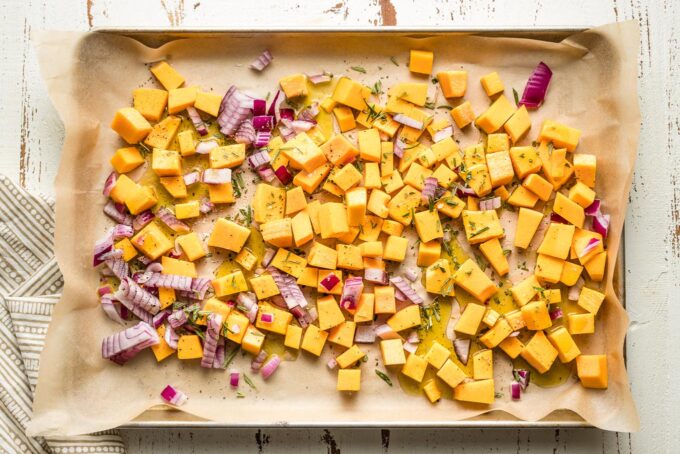
When the squash is done roasting, it will have slightly brown edges and it should be tender enough to pierce easily with a fork. The onion and rosemary will be very tender and fragrant.
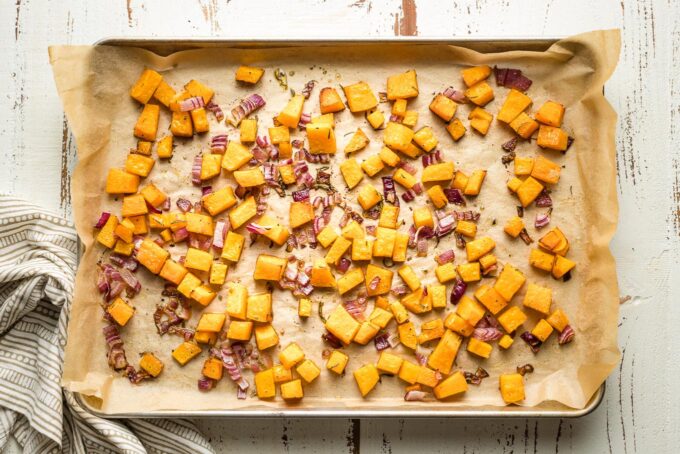
About halfway through the roasting time, boil a large pot of water, add a generous pinch of salt, and cook your pasta. Follow the package instructions for al dente pasta. I usually take off an extra minute of cooking time (meaning I set a timer for one minute less than the package states) to be sure our pasta has a good bite.
While waiting for the water to boil and the pasta to cook, prepare the rest of your ingredients. This is very simple! First, cook your bacon if needed. Next, toast a handful of walnuts in a large, dry skillet, then swirl in a bit of butter and olive oil.
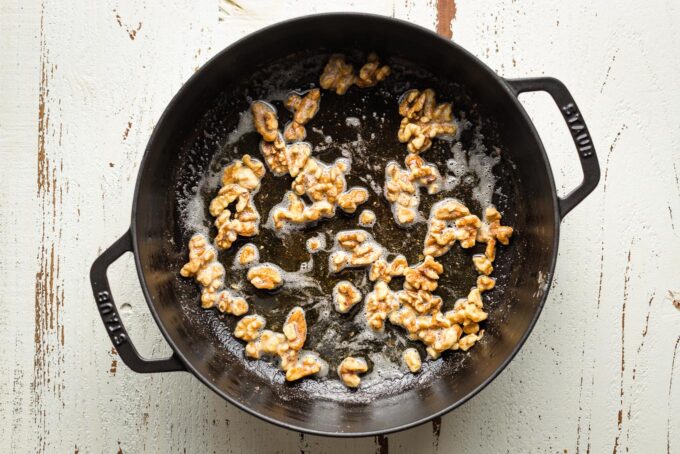
Now it’s a simple matter of adding everything to the skillet — the drained pasta, squash and everything else from the roasting pan, crumbled bacon, Parmesan, and a bit more rosemary for color and flavor.
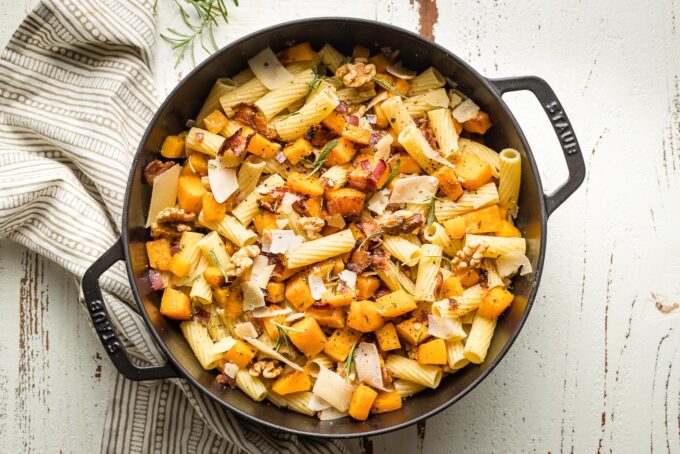
How saucy!?
This is not a very “saucy” dish. Many recipes for butternut squash pasta call for using a blender or food processor to puree the cooked squash into a sauce that then coats the pasta. This is absolutely delicious, but also a fair bit of work and extra clean up. So in this busy season of my life, I confess to preferring this simple method. You grab all the same cozy flavors in each delicious forkful, with no extra washing up.
Pro Tip
If you do prefer more of a sauce with this pasta, reserve some of the pasta water just before draining, then mix it back into the skillet, just a few Tablespoons at a time, after adding the pasta and squash.
Recipe FAQs & Expert Tips
Can you overcook butternut squash?
Yes. Do not leave cubed squash in the oven for more than about 25 minutes at high heat (425 degrees F or above) without checking on it frequently. It is done as soon as it fork-tender, but if it continues to roast it can be become mushy or even gummy in texture.
Can you eat the skin and the guts of butternut squash?
Actually, yes! Although we typically peel off the skin and scoop out the seeds of squash, both are actually edible. Who knew!?
Serving Suggestions
Scoop generous portions of pasta onto plates or into low-rimmed pasta bowls if you have them. Top with extras of all the good stuff: walnuts, Parmesan, rosemary, pepper, etc.
Favorite pairings with this pasta are my kale blueberry salad, Parmesan arugula salad, or roasted garlic green beans. Yum! If making the green beans, they can roast at the same time as the squash for simplicity.
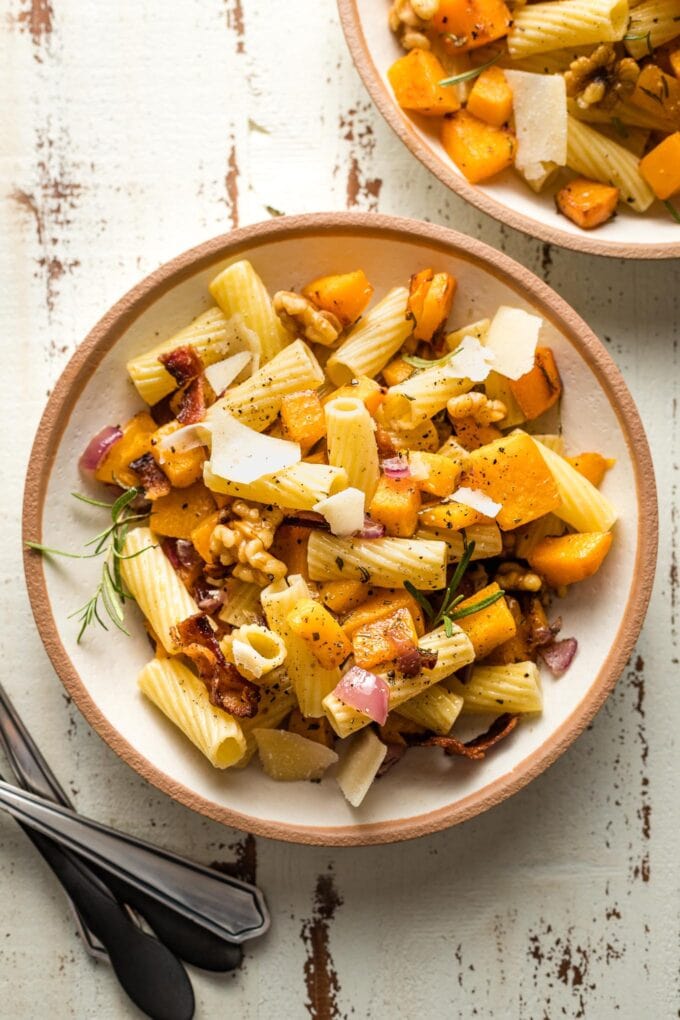
Variations
- Make it vegetarian. Omit the bacon, use a vegetarian Parmesan, and add extra walnuts to make up the difference.
- Make it vegan. Omit the bacon and Parmesan (consider sprinkling nutritional yeast on top instead) and use all olive oil instead of olive oil and butter.
- Make it gluten-free. Use your favorite gluten-free pasta and you’re there!
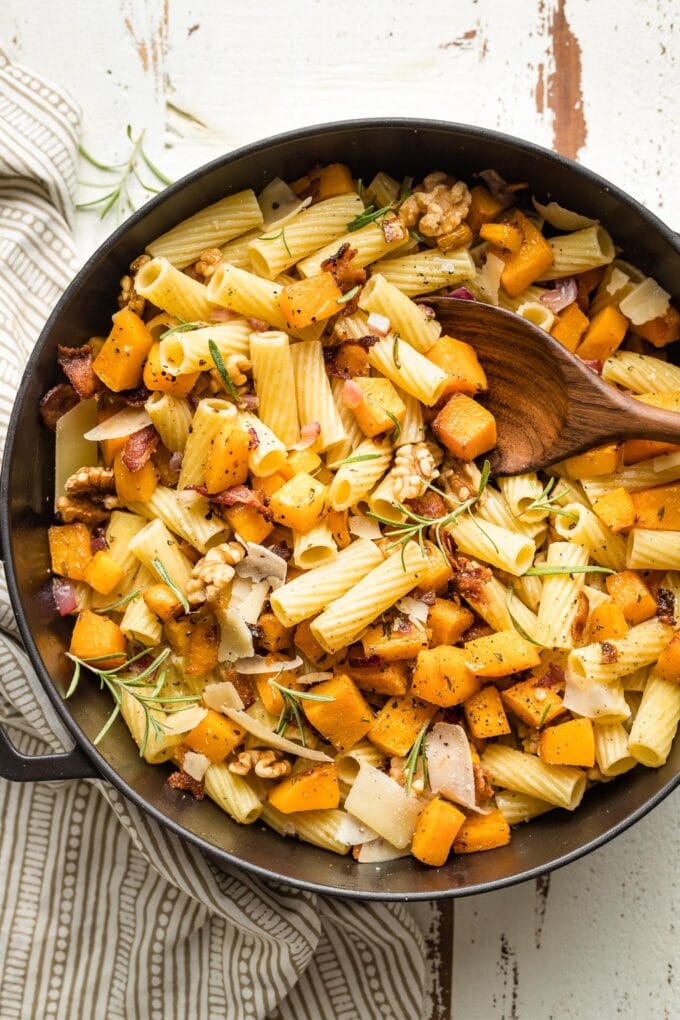
Storage & Reheating
This pasta makes great lunches or extra dinner the next day!
- Storage: Keep leftovers in any airtight container in the fridge for up to 5 days. (These are our favorite meal prep boxes for the refrigerator.) Consider storing the bacon and walnuts separately (walnuts can stay at room temperature).
- Reheating: Warm in the microwave or in a small saucepan over medium heat. If using a saucepan, judiciously add a splash of broth or water to prevent sticking.
Related Recipes
If you enjoy this dish, you’ll also love my sauce for pumpkin ravioli with sage, brown butter, and toasted walnuts, roasted butternut squash soup, or a butternut squash frittata with sage. Have an Instant Pot? It makes this risotto with butternut squash quick and easy.
If you try this Roasted Butternut Squash Pasta, don’t forget to rate the recipe and leave a comment below. I love hearing how recipes turn out in your kitchen, and it helps other readers, too.
You can also FOLLOW me on PINTEREST, INSTAGRAM, FACEBOOK, and TWITTER for more great recipes and ideas!
Roasted Butternut Squash Pasta
Ingredients
- 3-4 cups cubed butternut squash from 1 medium-large squash
- 1/2 red onion chopped
- 2 Tablespoons olive oil divided
- 1 Tablespoon chopped fresh rosemary or 2 teaspoons dried
- kosher salt and black pepper
- 8 ounces pasta
- 1/4 cup chopped walnuts
- 3 Tablespoons butter
- 2 pieces cooked bacon crumbled
- 1/2 cup shredded or shaved Parmesan
Instructions
- Preheat oven to 425 degrees F, and line a large rimmed baking sheet with parchment or a silicone baking mat for easy clean-up.
- Combine squash and onion on the baking sheet. Sprinkle with 1 tablespoon olive oil, rosemary, 1/2 teaspoon salt, and 6-8 cranks of fresh-ground black pepper. Toss to combine. Roast for 20-25 minutes, tossing halfway through cooking, until the squash is tender and starting to brown on the edges.3-4 cups cubed butternut squash, 1/2 red onion, 2 Tablespoons olive oil, 1 Tablespoon chopped fresh rosemary, kosher salt and black pepper
- When the squash is about halfway done, boil a large pot of well-salted water and cook pasta to al dente, according to package directions. Drain and set aside.8 ounces pasta
- Cook bacon, if needed, and crumble into small pieces.2 pieces cooked bacon
- While pasta cooks, place a large skillet or pot over medium heat. Add walnuts and toast in the dry skillet for 2-3 minutes, stirring frequently and taking care that they don’t start to blacken or burn. Once the walnuts are lightly toasted and fragrant, add butter and remaining 1 tablespoon olive oil to the pan.1/4 cup chopped walnuts, 3 Tablespoons butter
- When butter is melted, stir in the drained pasta, roasted squash, crumbled bacon, and Parmesan. Toss to combine. Garnish with additional sprigs of rosemary, if desired, and season with more salt and pepper to taste.1/2 cup shredded or shaved Parmesan
Notes
- Squash: For best results, use squash cut into cubes of approximately 1″. This allows them to roast quickly and evenly. Feel free to substitute another variety of winter squash.
- Onion: You can substitute 1-2 chopped medium shallots for a slightly different flavor, or use a white or yellow onion in a pinch.
- “Sauce”: This is not a very “saucy” pasta by its nature. If you prefer more of a sauce, reserve some of the pasta water just before draining, then mix it back into the skillet, just a few Tablespoons at a time, after adding the pasta and squash.
Nutrition Estimate
This post was originally published in October 2020 and has been updated with more answers to frequently asked questions and more information and variations, substitutions, and how to prepare squash.


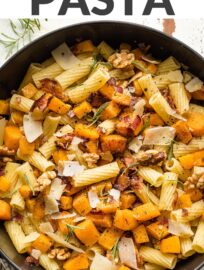
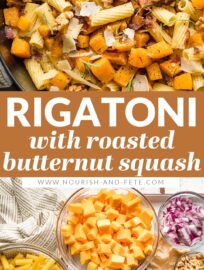
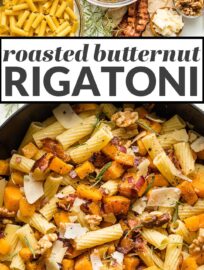
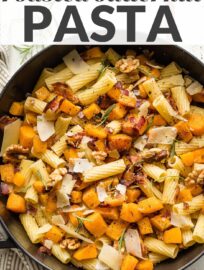
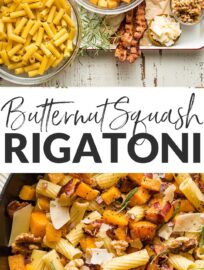
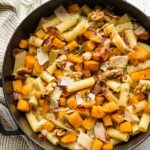

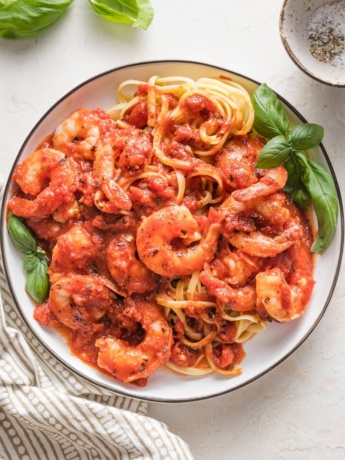
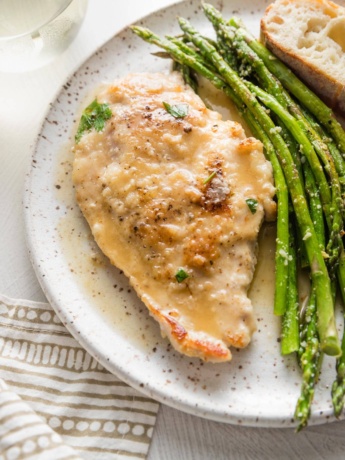
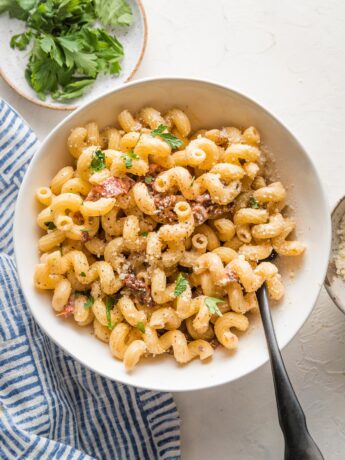
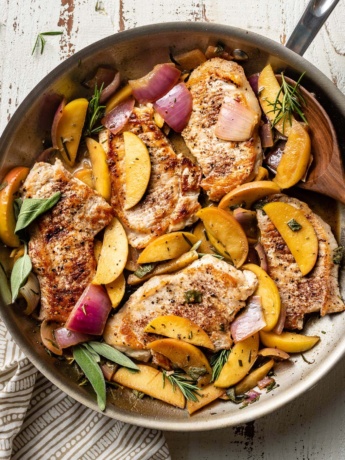
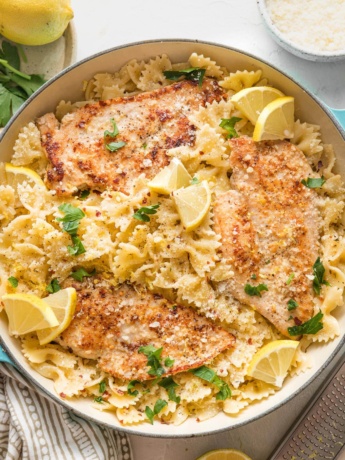
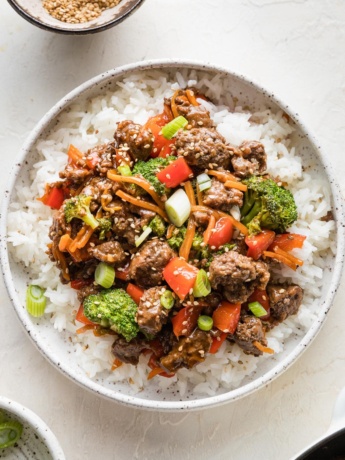
Super delicious! We had it for dinner last night and everybody loved it. Tasty autumn flavors.
This makes me so happy! Thank you!!
Forgot to put the rating!
This was so tasty and so easy. We subbed in gluten-free pasta, and it held up really well with all the great flavors! A perfect winter meal. Thank you!
Loved this recipe! Simple but amazing. Did not use bacon mainly because I was lazy and didn’t feel like cooking it but honestly didn’t miss it. Also used whole wheat penne which paired nicely I felt. Added some fresh parsley as well for color.
So happy you liked it, Kelley! Thank you for taking the time to leave this review and your notes!